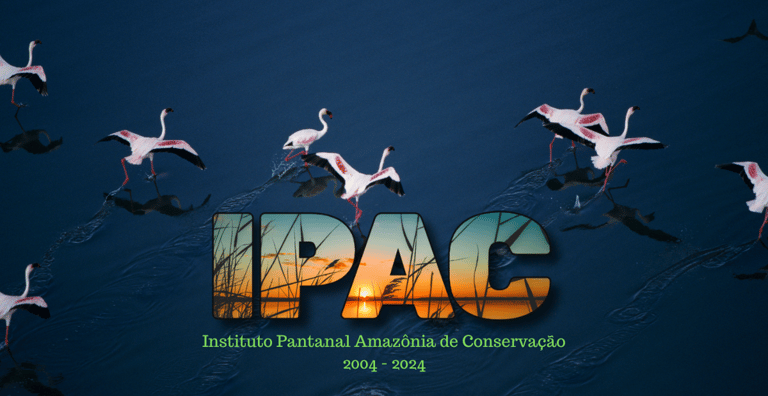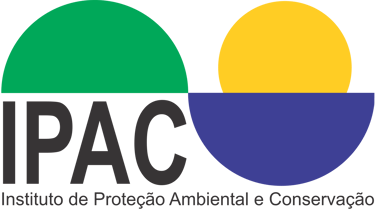TANGARÁ DA SERRA-MT . BRASIL 55 65 99987-8717 IPactangara@GMAIL.COM
Survey of the Ararão Stream Basin
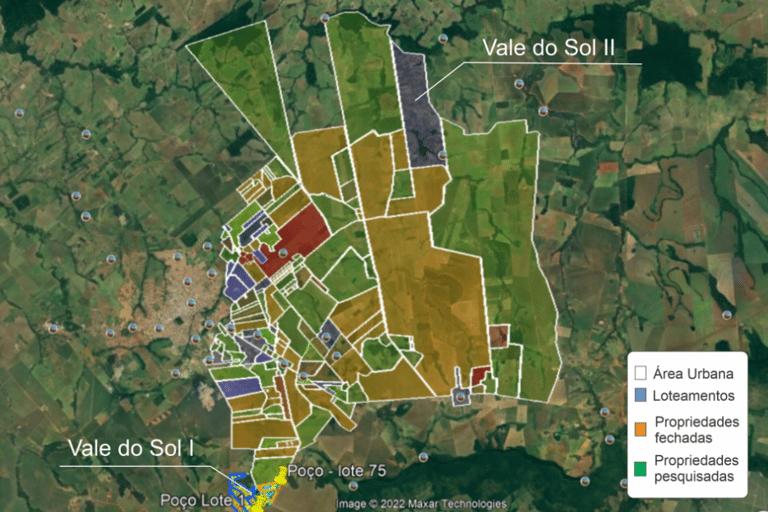

Data collection from producers in the Ararão Stream Basin began on June 29, 2022, with visits to properties and filling out forms. All values provided by producers or employees, and used in the graphs below, refer to the estimated monthly average in the last 12 months, that each property consumed or produced..
Property title
The vast majority of properties located in the Ararão Stream Basin are medium and large properties, where livestock farming and soybean and corn plantations predominate. Only in the Vale do Sol I and II communities are there small properties (up to 5 hectares) that suffer from various problems that compromise production.
In the surroundings of Tangará da Serra, one can notice the urbanization of some small properties that were productive not long ago, and that are now undergoing a process of subdivision and division into small leisure farms of less than 1 hectares. This is a constant evolutionary process, as can be seen in the various areas visited, without any activity, neighboring subdivisions and very close to the urban area.
In organized communities, such as Vale do Sol I and II, during the data collection for the diagnosis, it was noted that residents were generally dissatisfied with a series of problems that were occurring regarding the regularization of properties and that they expected greater action from the community and the association to work together to address the problems of the land. Some reported an interest in selling, due to a lack of resources to invest, since unregularized land prevents them from obtaining financing for planting and, therefore, makes it impossible to obtain financial resources to obtain definitive titles.
As for the existing properties, outside of these two areas mentioned, it can be seen that they were regularized.
From this survey carried out on 70 properties, regarding the title of the properties visited, the following data were obtained: 55 (79%) are landowners and live on the site, 14 (20%) are collaborators and 1 (1%) of the properties is leased.
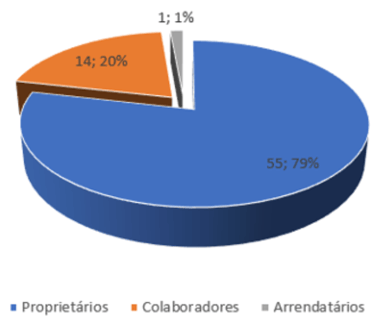

People residing on the property
During the interview, the number of people living on the properties was determined, and a total of 70 people were reached, divided as shown in the data in the table below:
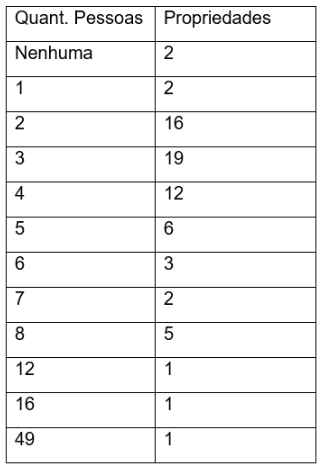

From this data it can be seen that in two properties, the owners live in the city, do not produce because they do not have the means and intend to sell. Significantly, in 12 properties we found 4 people, in 16 properties we found a couple and in 19 properties we found 3 people.
Associative participation
The interviewees asked whether the owners were members of any association or union. From the responses, we obtained the following data: 22 (31%) belong to an association and 48 (69%) do not. Among those who do belong, the majority are cattle breeders and are affiliated with the Rural Union and some have poultry farms and are associated with the Poultry Farm Association. Those who do not belong to any entity demonstrate that they have belonged in the past, but, dissatisfied, they left.
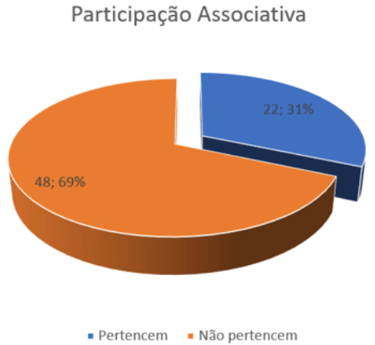

Health
When asked about health problems in the family, 34 (49%) said they had health problems such as high blood pressure, cholesterol, heart problems and diabetes, while 36 (51%) said they had no serious health problems.
Considering the high number of people with some type of illness, the researchers asked how much these families spent on medicine and found a monthly amount of R$14,820.00 (fourteen thousand, eight hundred and twenty reais), which would be an average of R$265.00 (two hundred and sixty-five reais) per family.
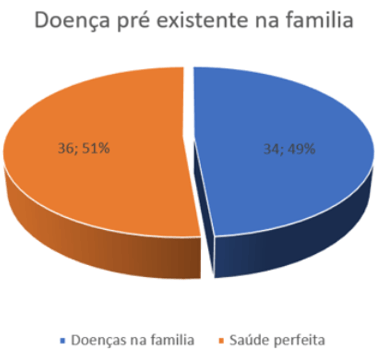

They carry out activities outside the property
Another item asked whether anyone in the family who lived on the property carried out any activity outside the property as a way of increasing the family income. Of the 70 families, 28 (x%) people carried out some activity while 42 (X%) lived exclusively on internal income.
Other property income
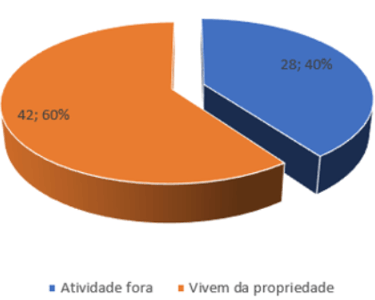

In the same line of reasoning, the question was asked whether the property had any form of income from pasture rentals, leasing of areas, machinery and implements that provided services outside the property. From the responses, it can be seen that 22 (x%) properties had some type of extra income and 48 (x%) did not have this income.

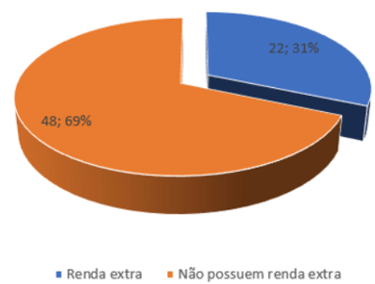
Total area of the properties and their occupation
When asked about the form of occupation and production of the properties, we were informed of the following values:


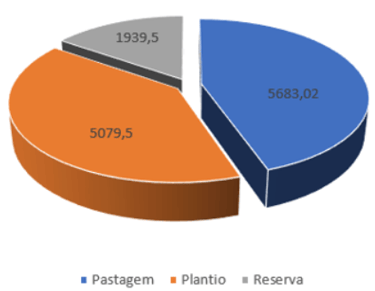

Physical structure of properties
Regarding the structure of the houses on the properties, the majority (56) are built in masonry, with an internal bathroom and external finishing. Others (17) are built in wood and only 8 houses are of mixed construction.
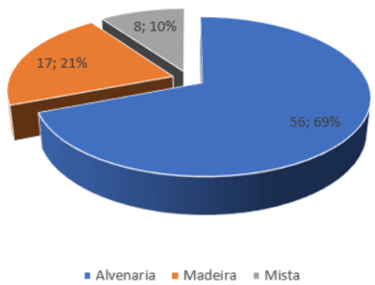

Other structures
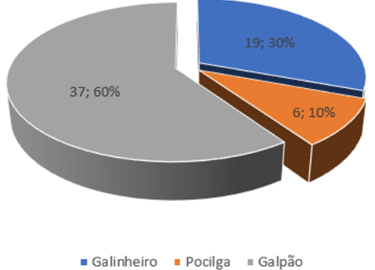

Water use on the property
Regarding water collection on the property, we asked whether the water used came from a well, artesian well, semi-artesian well or mine. From the responses we gathered the following data: 26 used a well, 34 had an artesian well and 10 used a mine for household consumption and a semi-artesian well for other structures. This is explained by the fact that the pH of the water from the semi-artesian well is not ideal for human consumption.
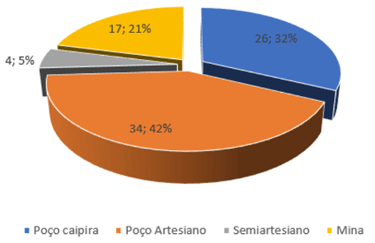

Production of properties
The properties have a large variation in production. In the table below you can see the products produced and the quantity of properties that produce them:
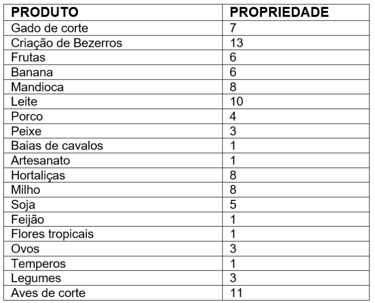

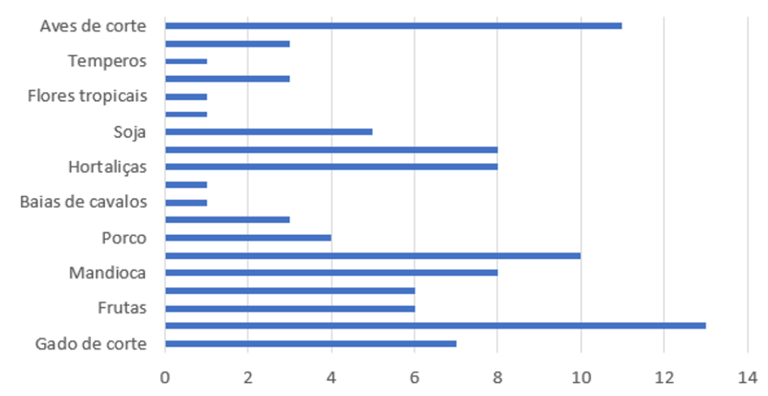

Production expenses
Regarding production costs on the properties, we found the following data:
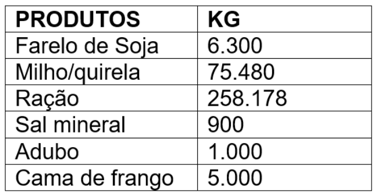

Use of equipment on the property
The properties use tractors, implements, tractors, shredders and other machinery to facilitate field management. Owners and tenants were asked whether they had their own equipment or used third-party equipment for the service. Of the 70 properties, 26 had their own equipment, 21 hired third-party services and 23 did not use any equipment at all.
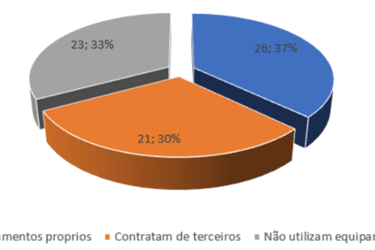

Care for the Environment
Both the owners and the employees and tenants demonstrated a superficial knowledge of sustainability and the rational use of the land's resources. They explain in simple terms how they take care of their land to prevent its natural deterioration and are concerned about sharing this knowledge with their employees, friends and neighbors, in order to provide guidance on how to avoid possible disasters such as excessive deforestation and how to care for the banks of streams and preserve springs.
As for the garbage on their property, they burn paper and bury cans, glass and construction waste. The garbage from bags of chemical products, fertilizers and salt is taken to the recycling point and the organic waste is given to livestock.
Most of them have not yet attended any lectures on the environment, but said they would like to attend.
Finally, they were asked if they had any plans for the future of their properties. The answers were as diverse as possible, but they showed that they have dreams to fulfill. When asked if they had a plan to make these dreams come true, they were at a loss to answer due to the difficulties they were facing, but they risked an average of 5 years of hard work if there was no government incentive. They were told that the hope for better days leads them to believe that something can happen to make it easier for them to make their dreams come true, and most were unanimous in mentioning, in addition to government incentives, the appreciation of agriculture and farmers and the creation of a serious and transparent cooperative that would facilitate the distribution of their production.
Results achieved
Identification of the main family producers in the municipality;
Collection of data from the owners;
Complementing the results of future workshops;
Identification of the problems that most affect residents.
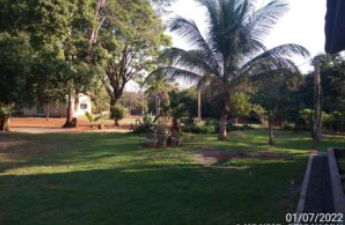

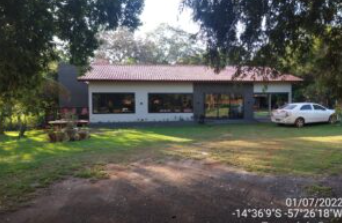

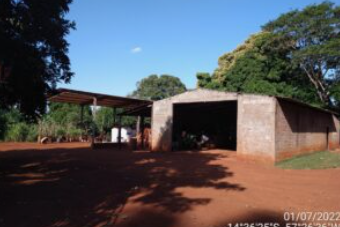

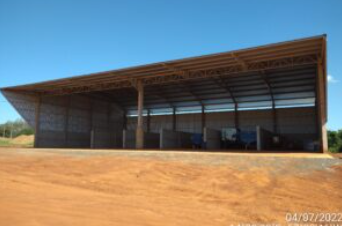

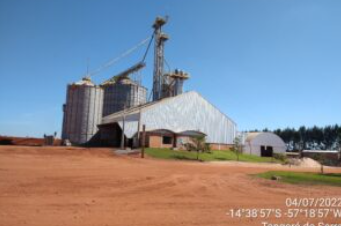

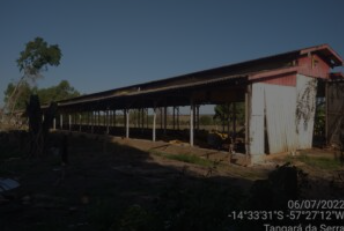

Institute for environmental preservation and conservation
We defend environmental and cultural preservation.
CONTACT
contato@ipac.org.br
55 65 99987-8717


